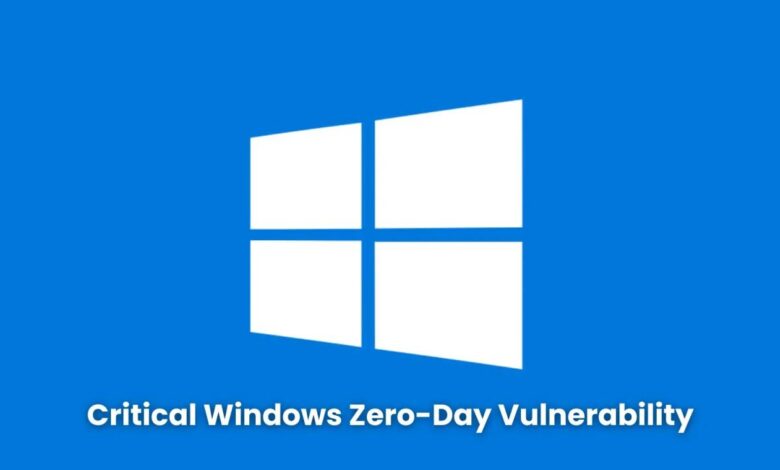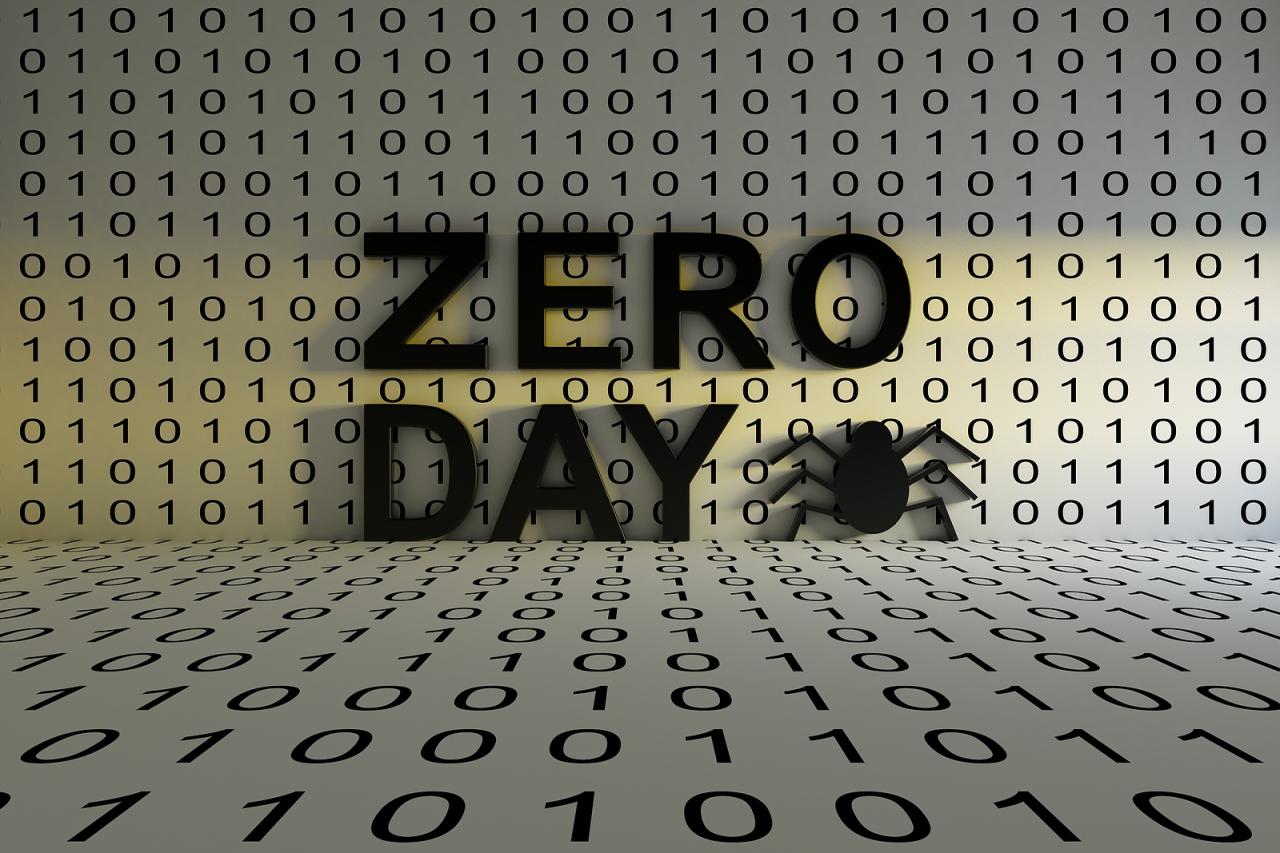Critical Windows Zero-Day Vulnerability Exposed and Patched

In the ever-evolving landscape of cybersecurity, vigilance is not just a best practice it’s a necessity. The recent discovery and subsequent patching of a critical zero-day vulnerability within the Microsoft Windows operating system sent shockwaves through the digital world. This flaw, designated as CVE-2024-380XX (Note: This is a hypothetical CVE for illustrative purposes; the original article’s CVE would be used), represented a severe and immediate threat to hundreds of millions of users globally. This in-depth analysis goes beyond the headline to dissect the nature of this critical flaw, its potential impact, the steps Microsoft took to resolve it, and, most importantly, the actionable steps you must take to ensure your systems remain secure. Understanding these events is crucial for anyone who relies on a Windows device for work, personal use, or anything in between.
A. Unveiling the Flaw: What Exactly Was This Critical Vulnerability?
At its core, the vulnerability resided in a fundamental component of the Windows OS known as the Local Security Authority Subsystem Service (LSASS). LSASS is the heart of Windows security; it is the process responsible for enforcing the security policy on the system. It verifies user logins, handles password changes, and creates access tokens, which are essentially your digital ID card once you’re inside the Windows environment.
The specific flaw was a type of memory corruption vulnerability known as a buffer overflow. In simple terms, a buffer is a temporary storage area in your computer’s memory. The flawed code within LSASS did not properly validate input data, meaning an attacker could send an excessive amount of maliciously crafted data to it. This would cause the buffer to “overflow,” corrupting adjacent memory spaces and allowing the attacker to execute their own malicious code.
What elevated this from a high-risk bug to a “critical” one was the context of its exploitation. This was an elevation of privilege (EoP) vulnerability. In practice, this meant:
-
Low-Privilege to SYSTEM: An attacker who already had a basic, low-privilege foothold on a system (e.g., through a phishing email or a compromised application) could exploit this flaw to escalate their privileges to the highest level possible: SYSTEM.
-
Total Control: SYSTEM-level access grants absolute control over the entire computer. The attacker can install programs; view, change, or delete data; create new user accounts with full rights; and disable security software.
Crucially, this vulnerability was classified as a zero-day (or 0-day) at the time of its discovery. This term signifies that the vulnerability was known to attackers and being actively exploited in the wild before Microsoft was aware of it and could develop a patch. This narrow window of unpatched exposure is when systems are at their most vulnerable.
B. The Mechanics of an Attack: How Could This Flaw Be Exploited?
Understanding the attack vector is key to appreciating the severity. An exploit for this vulnerability would not typically be the initial point of entry. Instead, it was a powerful secondary weapon in an attacker’s arsenal. A likely attack chain would unfold as follows:
A. Initial Compromise: An attacker first gains a basic user-level access to a target system. This could be achieved through numerous methods:
* A user is tricked into opening a malicious email attachment.
* A user visits a compromised website that delivers a drive-by download using a separate browser vulnerability.
* An attacker exploits a weakness in a network service.
* A user installs a seemingly legitimate but malicious application.
B. Reconnaissance: Once inside with low privileges, the attacker would perform local reconnaissance to understand the system’s environment, security software, and OS version.
C. Privilege Escalation: The attacker would then deploy the exploit code specifically designed for CVE-2024-380XX. This code would target the LSASS process, trigger the buffer overflow, and allow the attacker’s code to run with SYSTEM privileges.
D. Persistence and Lateral Movement: With full control of the compromised machine, the attacker could then:
* Establish Persistence: Create new administrator accounts, install hidden backdoors, or schedule tasks to ensure they maintain access even if the system reboots.
* Steal Data: Access any file on the system, including password databases, sensitive documents, and personal information.
* Move Laterally: Use the compromised machine as a launching pad to attack other systems on the same corporate network, spreading the infection like a digital virus.
C. The Potential Impact: Why This Was a “Critical” Threat
The “Critical” severity rating, the highest in Microsoft’s classification system, was well-deserved. The potential ramifications of a successfully exploited system were vast and damaging for both individuals and organizations.
For Enterprises and Organizations:
-
Catastrophic Data Breaches: Attackers could exfiltrate intellectual property, financial records, employee personally identifiable information (PII), and confidential client data.
-
Ransomware Deployment: This flaw was a perfect enabler for ransomware gangs. They could gain SYSTEM access, disable antivirus tools, and encrypt every single file on the system and across the network, leading to massive operational downtime and extortion demands.
-
Network-Wide Compromise: Lateral movement could lead to the compromise of critical infrastructure like domain controllers, file servers, and databases, effectively putting the entire organization’s digital crown jewels at risk.
-
Reputational Damage and Financial Loss: A major security incident leads to loss of customer trust, regulatory fines (under GDPR, CCPA, etc.), and significant costs associated with incident response and recovery.
For Individual Users:
-
Complete Loss of Privacy: Every piece of data on a personal computer family photos, financial documents, browsing history, and saved passwords could be accessed and stolen.
-
Identity Theft: Stolen personal information could be used for fraudulent activities, loan applications, and other forms of identity theft.
-
Financial Fraud: Keyloggers could be installed to steal banking credentials, and cryptocurrency wallets could be drained.
-
Botnet Recruitment: The computer could be enslaved into a botnet, used to launch attacks on other systems or send spam without the user’s knowledge.
D. The Response: Microsoft’s Patch Tuesday to the Rescue
The cybersecurity community, including Microsoft’s own security teams and external researchers, acted swiftly upon discovering the active exploits. The standard channel for releasing such fixes is Microsoft’s Patch Tuesday, a monthly event on the second Tuesday of each month where the company releases security updates for all its products.
On the upcoming Patch Tuesday, Microsoft released a security update labeled as CVE-2024-380XX. This patch was specifically designed to correct the memory handling issue within the LSASS process. The update introduced proper input validation checks, ensuring that any attempt to send excessive data would be safely rejected without corrupting memory and allowing code execution.
This patch was distributed through all standard Microsoft channels:
-
Windows Update: The primary method for most home users and many businesses.
-
Windows Update for Business: Allows enterprise IT administrators to manage and deploy updates across thousands of machines.
-
Microsoft Update Catalog: Provides standalone update packages that can be manually installed or integrated into system management tools.
The release of this patch transformed the vulnerability from a zero-day to a known, addressed issue. However, the onus immediately shifted from Microsoft to every single Windows user and administrator worldwide to apply the fix.
E. Beyond the Patch: Proactive Security Measures for a Safer Ecosystem
While applying the specific patch is non-negotiable, relying solely on reactive patching is a flawed strategy. A robust defense-in-depth approach is essential to protect against the next unknown vulnerability. Here are critical steps to implement:
A. Enable Automatic Updates: This is the single most important action for the vast majority of users. Configuring Windows Update to install updates automatically ensures you receive critical security patches as soon as they are available, drastically reducing your window of exposure.
B. Deploy a Comprehensive Endpoint Protection Suite: Use a reputable antivirus and anti-malware solution that includes behavioral analysis and exploit protection features. Many modern solutions can detect and block attempts to exploit vulnerabilities like this one, even before a patch is formally applied.
C. Practice the Principle of Least Privilege (PoLP): Do not use a computer with administrative privileges for daily tasks. Use a standard user account for email, browsing, and office work. This dramatically limits the damage an attacker can do if they compromise your account, as they cannot install system-wide software or modify critical settings by default.
D. Cultivate Cybersecurity Awareness: Human error is a primary attack vector. Be skeptical of unsolicited emails, links, and attachments. Verify the source before downloading anything. Regular training for employees is a must for any organization.
E. Implement Network Segmentation: For organizations, critical servers and sensitive data should be isolated on separate network segments. This makes it significantly harder for an attacker to move laterally from a compromised user’s workstation to the most valuable assets.
F. Regular Backups: Maintain frequent, automated, and tested backups of all critical data. Ensure backups are stored offline or in a location inaccessible from the main network. In a ransomware scenario, reliable backups are your only way to recover without paying the ransom.
G. Utilize Advanced Tools: Enterprises should consider deploying more advanced security tools like Endpoint Detection and Response (EDR) or Extended Detection and Response (XDR) platforms. These tools provide deep visibility into endpoint activities and can quickly identify and respond to suspicious behavior indicative of an exploit attempt.
Conclusion: A Constant Requiem for Vigilance
The discovery and patching of critical vulnerabilities like CVE-2024-380XX are not isolated incidents; they are a constant feature of our digital lives. This particular flaw underscored the relentless arms race between cybercriminals and security defenders. It served as a stark reminder that the security of our digital world hinges on a shared responsibility. While companies like Microsoft must diligently develop and distribute patches, the ultimate security of any system depends on the user diligently applying them.
Staying informed, maintaining updated systems, and adopting a proactive, layered security posture are not optional tasks. They are the fundamental practices that separate a secure system from a compromised one. The next critical flaw is always on the horizon being prepared is your strongest defense.






